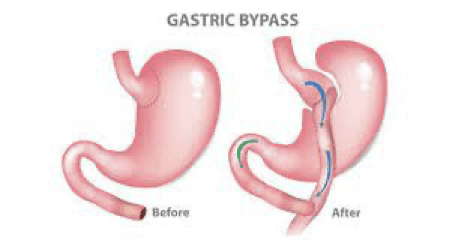Achieving great success with a revision procedure for gastric bypass has taken time. Millions of people have undergone Roux-en-Y gastric bypass since it became the primary surgical treatment for obesity and type two diabetes. As the years go by, environmental and biological factors conspire to create weight re-gain, as well as the return of diabetes over the years for some people. So, a considerable number of people wonder if revising the original gastric bypass is feasible, and if it would produce successful weight loss, diabetes reversal, and other health improvements.
The answer today is yes.
Revisional Metabolic Surgery
The best type of revisional procedure has been debated and an elusive and controversial research topic among bariatric surgeons for decades. A number of different strategies have been pursued by different surgeons in different centers and across many different countries. As an old professor once told me, one good rule of thumb when evaluating medical procedures is that when there are a substantial number of procedures to treat the same problem, this tells you that none of those procedures is really all that terrific. And those wise words were true for gastric bypass revision until recent years.
 Today, a simplified, safe, and effective revision option can be performed in about forty-five minutes and deliver long-term weight loss and health improvement.
Today, a simplified, safe, and effective revision option can be performed in about forty-five minutes and deliver long-term weight loss and health improvement.
To recap a few of the historical strategies, one should think about the anatomy of the gastric bypass and the goals of the procedure. Gastric bypass consists of creating a small stomach pouch, and then connecting the jejunum up to this gastric pouch. For years, surgeons have thought that the small gastric pouch would serve as a restrictive form of therapy, reducing the food intake. The bypass portion would, so the story went, serve as a malabsorption treatment, reducing absorption of nutrients. Together, these two mechanisms would produce long-term weight loss.
Science has a way of making fools of all of us, and such is the case with those old, purported mechanisms of bariatric surgery. We now know from sophisticated studies in humans and animals that neither of the restrictive theory, nor the malabsorptive theory has much validity. Restricting nutrient intake has only mild success, and not especially durable success. Malabsorption is not a mechanism at all in weight-loss surgery, except in unusual cases. Instead, we know that the primary, and the only meaningful long-term mechanism that produces reversal of diabetes and obesity, is a hormonal mechanism, or a truly metabolic mechanism. The surgery changes conditions of the stomach and intestine that produce long-term changes in the levels of key hormones that control body weight and blood sugar.
With that understanding, we then turn to revisional procedures which can theoretically jumpstart, or maximize the hormonal changes required to induce reversal of diabetes and reversal of obesity. It turns out we have a great understanding of those hormonal mechanisms from decades of studying other procedures, specifically the biliopancreatic diversion. What we have learned is that the length of the biliopancreatic limb plays a key role in long-term weight loss and diabetes remission. The absence of food substrate tickling the lining of the bypassed biliopancreatic limb is the key ingredient for a whole sea change in the hormone profile that regulates body weight, blood, sugar, and the number of other metabolic functions, such as fat storage in the liver and the circulating triglycerides.
Revising the Roux-en-Y Gastric Bypass
So where does that leave us? The good news is that it offers a safe effective — and not terribly complicated — avenue to revise the gastric bypass and achieve some stunning results of improved long-term weight and health improvements.
Many of us refer to this revision as creating more longer more distal BP limb, or distalization procedure. The procedure involves laparoscopically measuring the length of the limbs of the gastric bypass and the common channel – that is where the Roux limb and the BP limb join to a common pathway downstream. In nearly all cases of gastric bypass prior to 2020 or so, the BP limb is very short and can be lengthened substantially to induce highly favorable hormonal changes and reduced weight and blood sugars. The surgeon measures each limb and makes a new assessment for the ideal length of each limb, individualizing to the patient’s body weight, diabetes risk and health. Re-measuring and re-connecting the limbs can usually be accomplished in a safe, 45-minute procedure in experienced hands. For an extra small boost, if the gastric pouch is large, it can of course be tightened, but the long-term payoff is in the hormones of the new bypass limbs.
For individuals whose original gastric bypass was performed laparoscopically, this revision procedure is very safe and can be performed without open surgery, with a brief overnight observation stay and a one to two week recovery. If the prior surgery was open, there are more adhesions, and the procedure may be more challenging.
The Takeaway
As with any proposed procedure, consult with your experienced bariatric surgeon about the details, the long-term vitamin regimen and any other specific advice related to your personal health history. Obesity is a very challenging, life-long battle. But if you or a loved one has re-gained weight after gastric bypass surgery, and you have been told there is no option for surgery again, the truth is much brighter than you have been led to believe.




